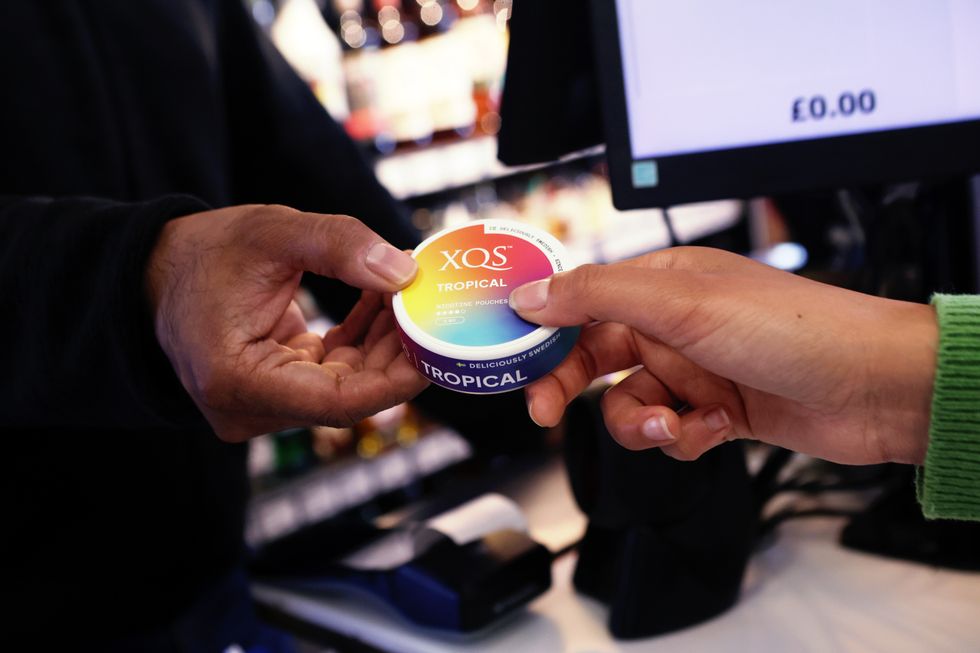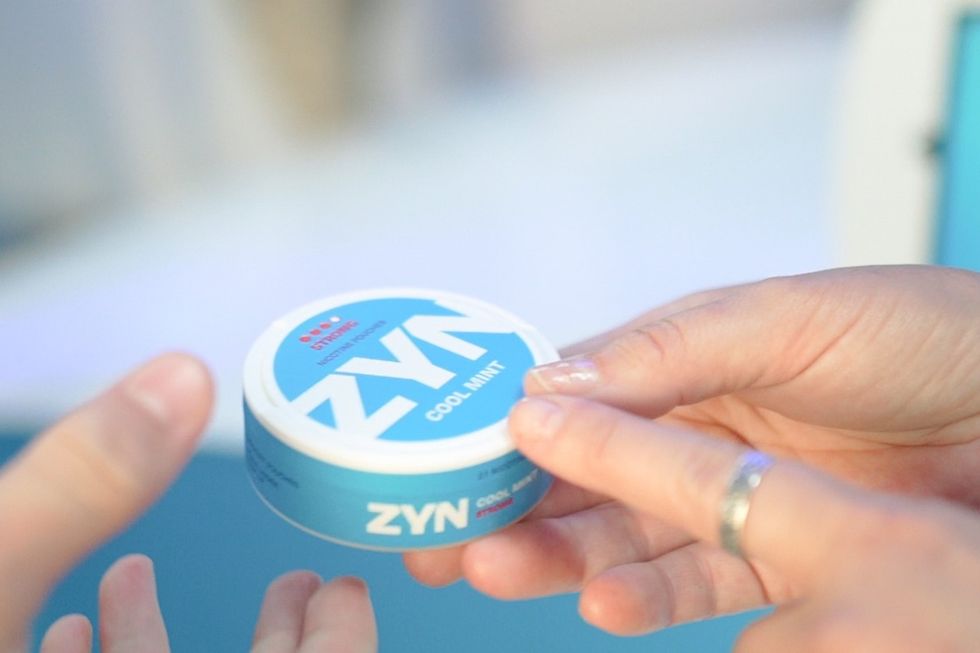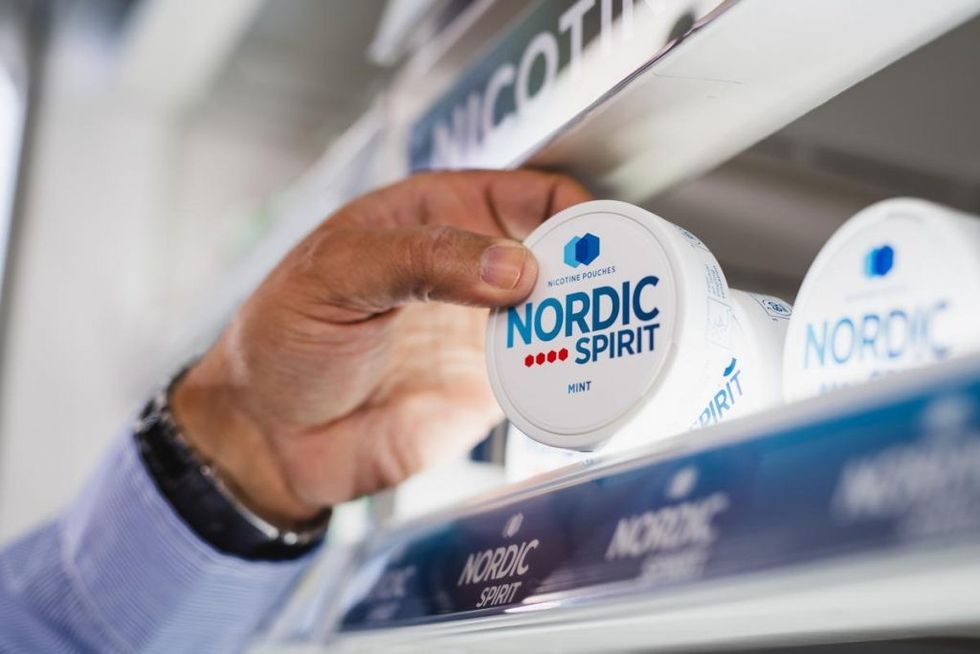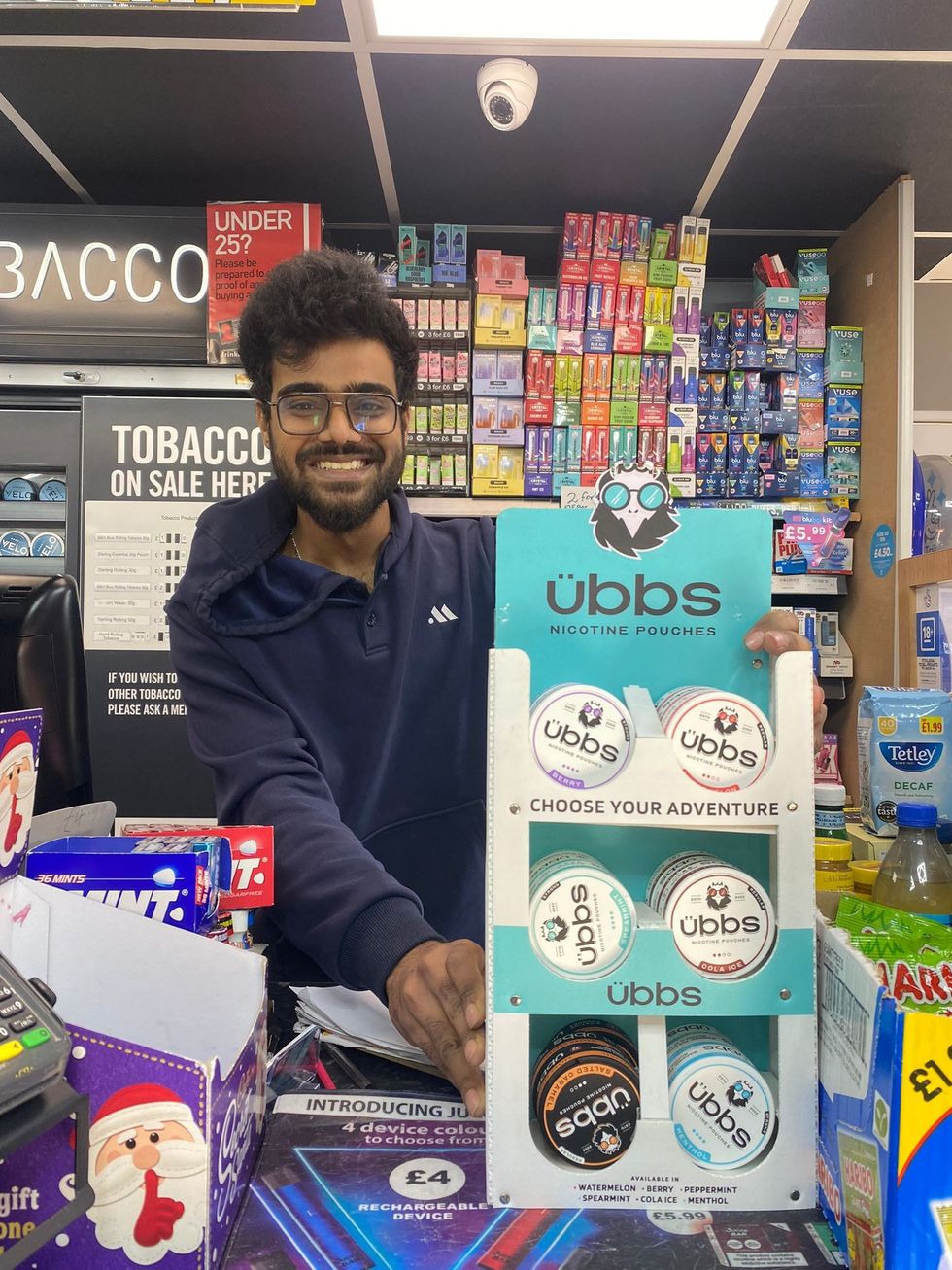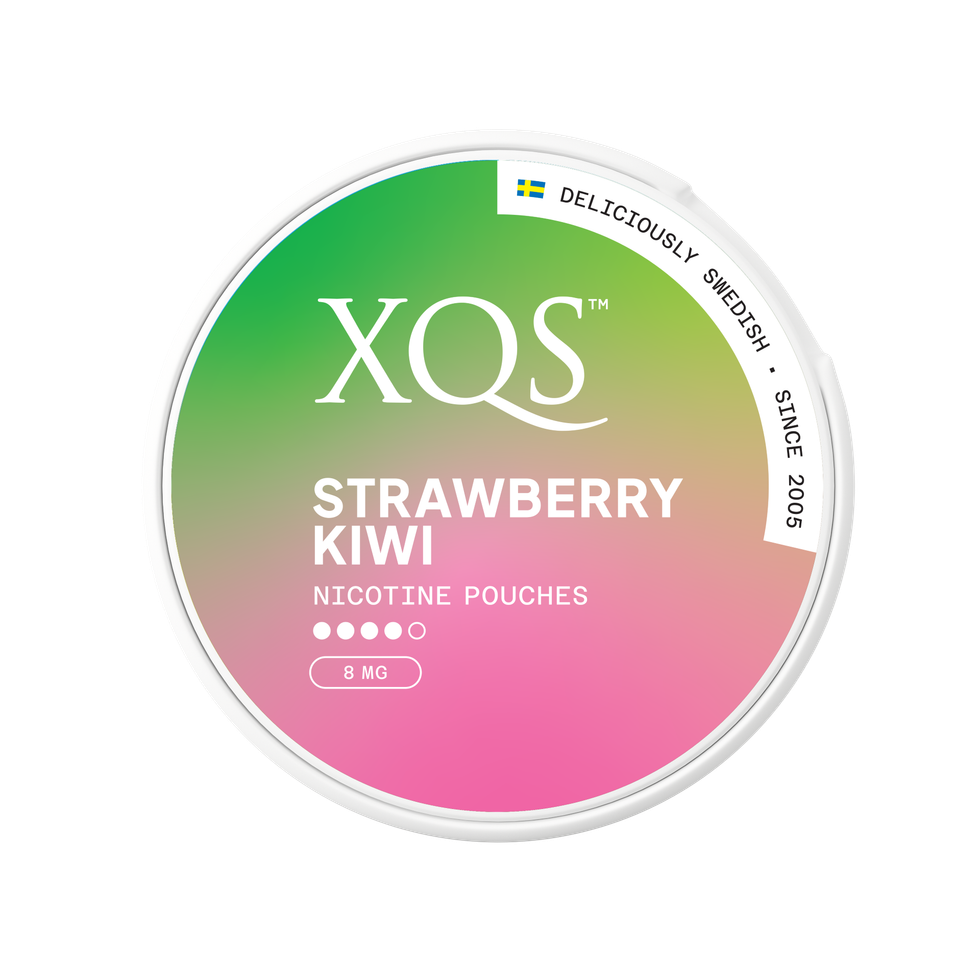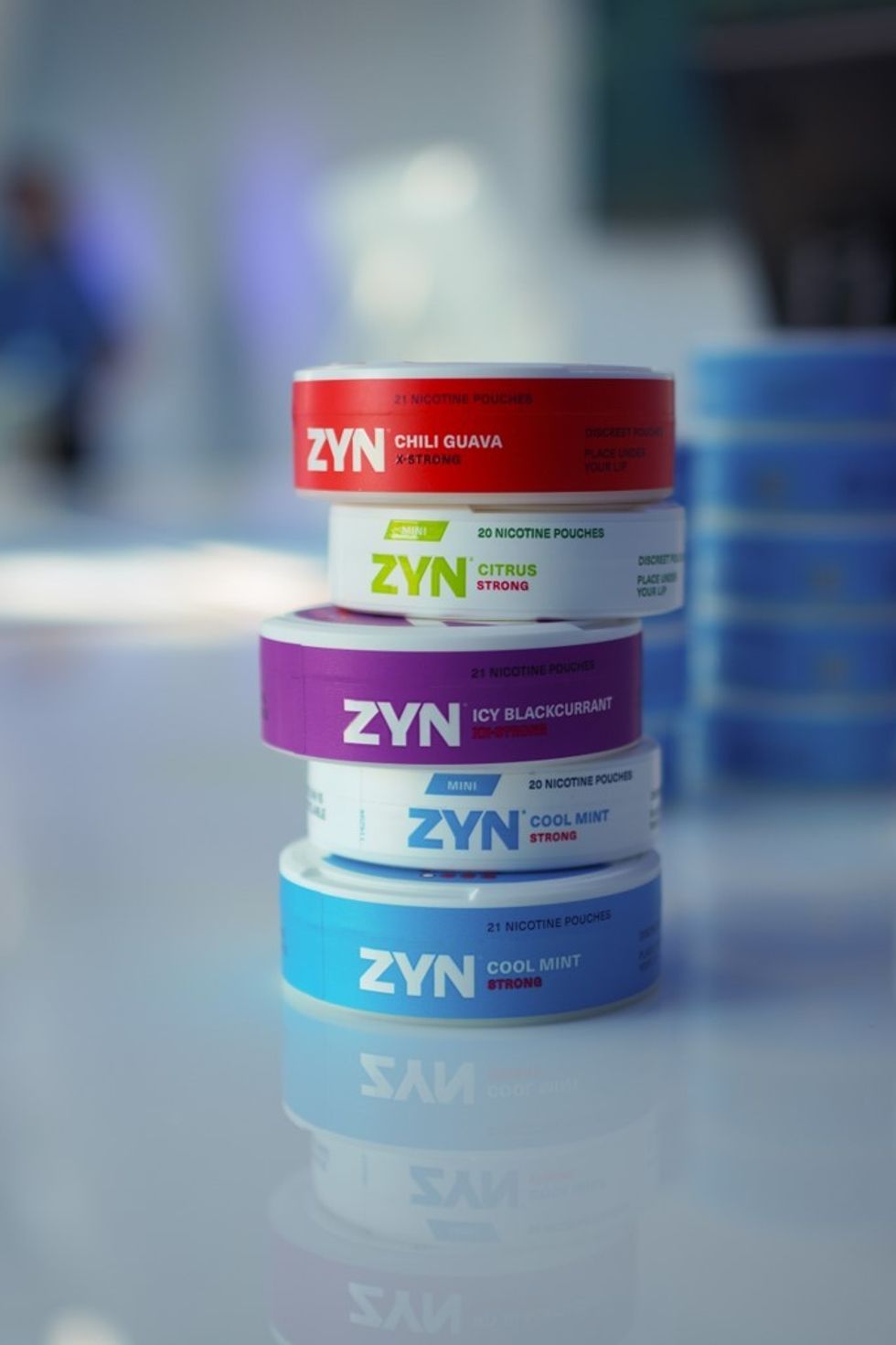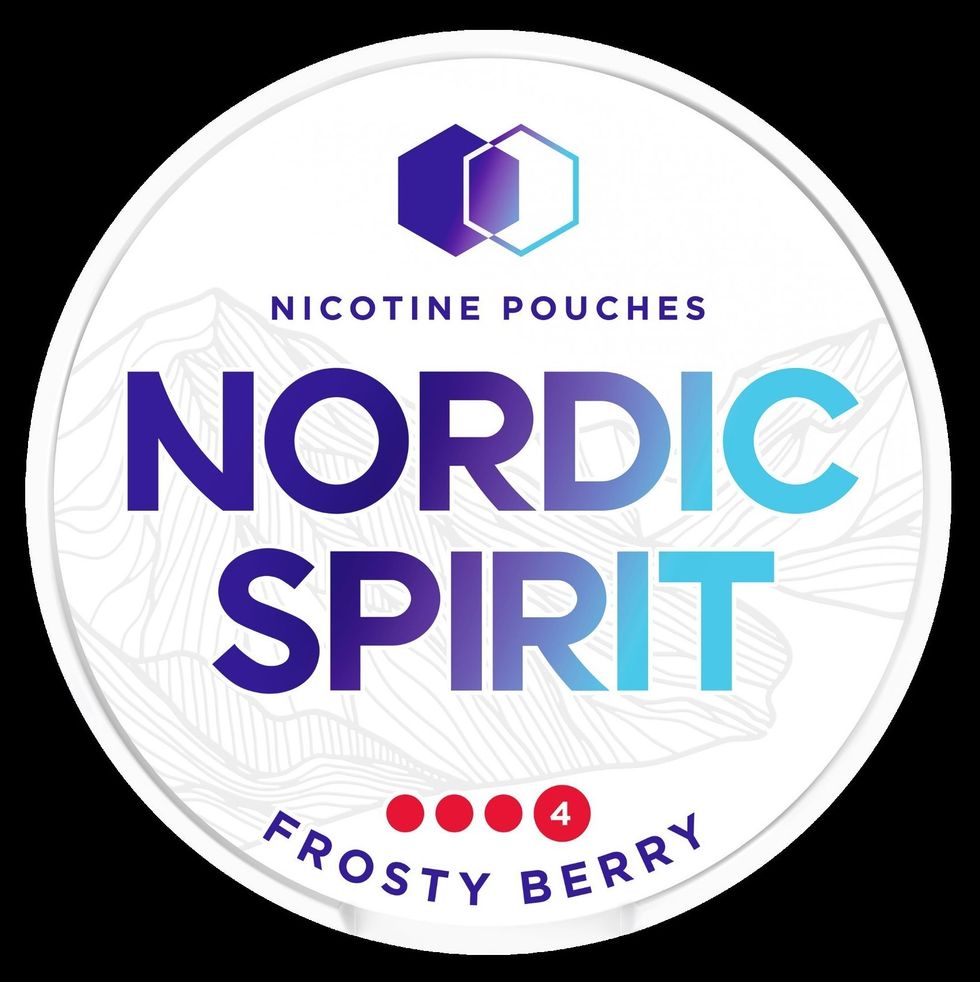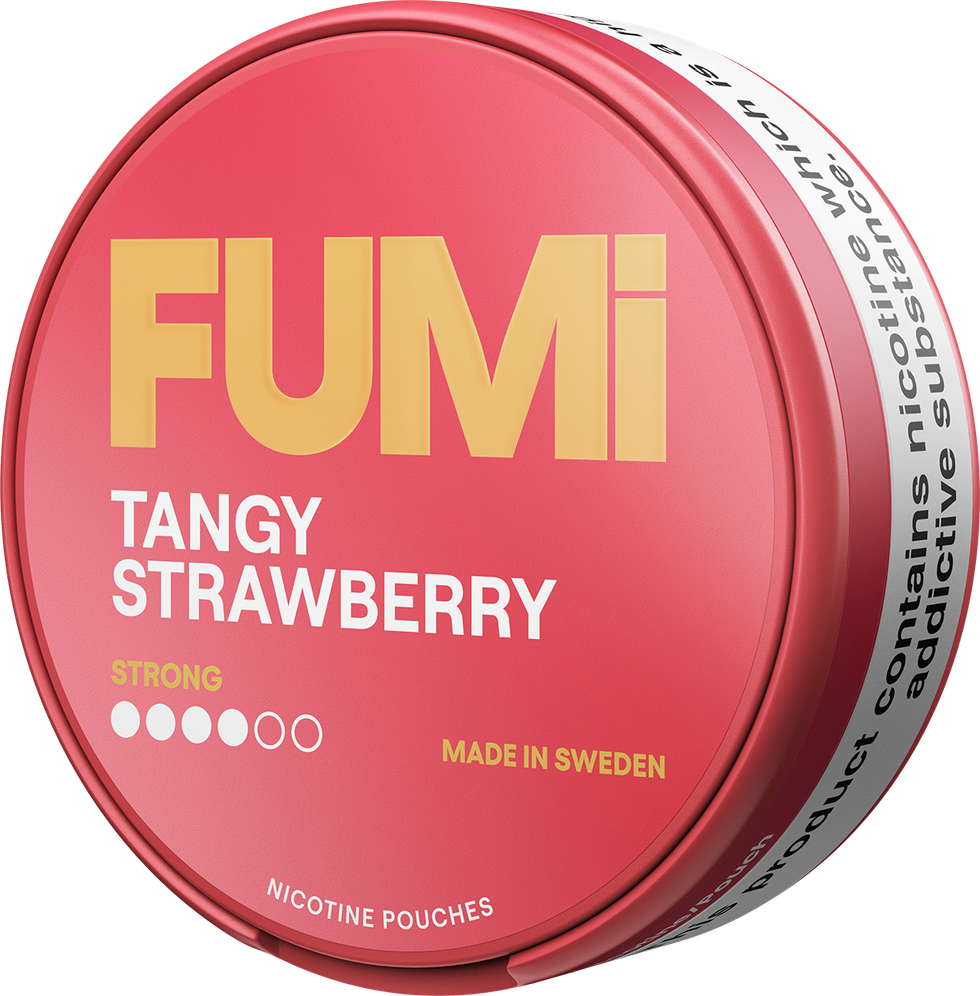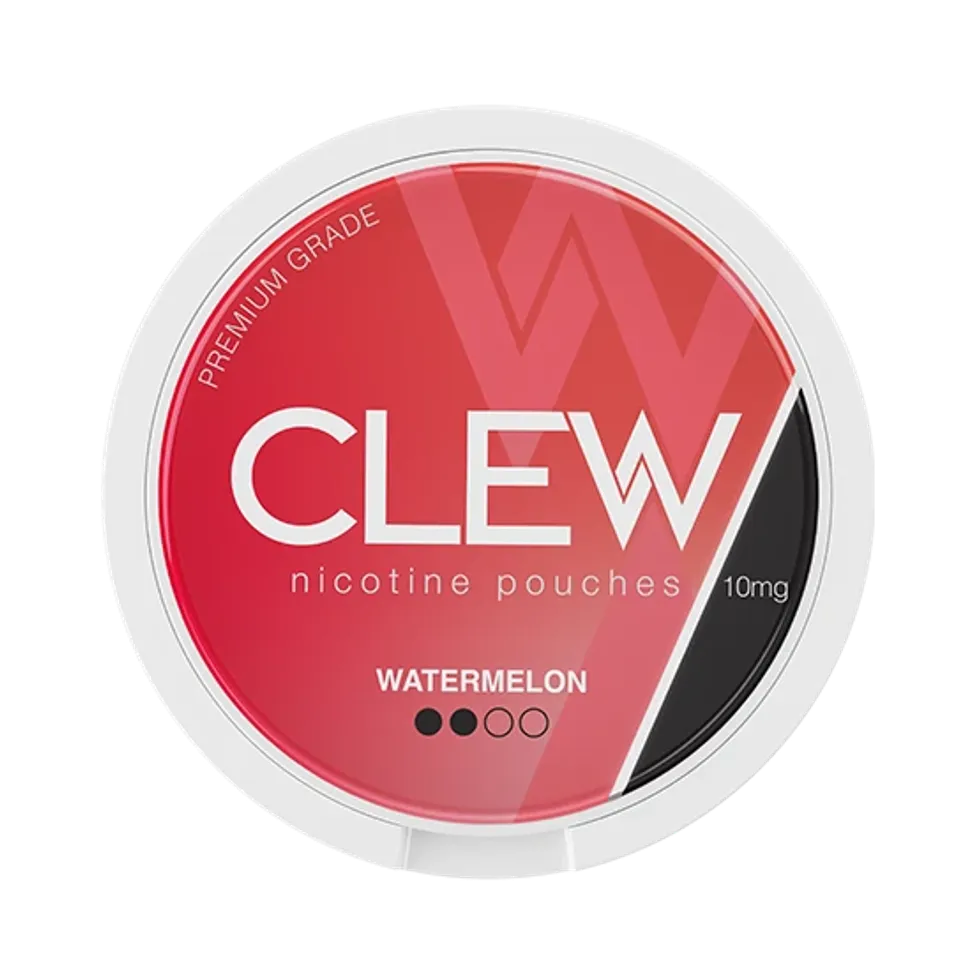Nicotine pouches – small, tobacco-free sachets placed between the lip and gum – have rapidly evolved from a niche Scandinavian product to one of the UK's fastest-growing tobacco alternatives. With recent market research showing explosive growth rates of over 700 per cent in a single quarter for some retailers, these unassuming products are proving to be anything but quiet when it comes to sales potential.
The next frontier
The evolution of nicotine products has followed a clear trajectory: first came vaping, then heat-not-burn devices, and now possibly the most revolutionary development of all – nicotine pouches. Drawing inspiration from traditional Scandinavian tobacco practices, these modern alternatives contain no tobacco whatsoever, instead using nicotine-infused fibre with added flavourings and sweeteners.
For convenience retailers, the category represents a significant opportunity amid changing consumer preferences and increasing restrictions on traditional tobacco products. Unlike e-cigarettes or heated tobacco systems, pouches require no batteries, produce no vapour or smoke, and can be used virtually anywhere without drawing attention – making them the ultimate discreet nicotine product for today's consumer.
Grand View Research valued the UK nicotine pouches market at £185.07 million in 2024, projecting a compound annual growth rate of 7.6 per cent through 2030. Perhaps more telling is the rapid consumer adoption rate – a recent study published in Nicotine and Tobacco Research revealed that the proportion of adults who have tried nicotine pouches doubled from 2.7 per cent in 2020 to 5.4 per cent in 2024.
“The growth we have experienced since our launch in May 2024 is nothing short of phenomenal. Our commitment to excellence, an unmatched product range, and a deep understanding of our consumers' evolving needs have driven our stellar performance,” says George Muharib, Director of Prime Nic Pouches, a specialist retailer that reported extraordinary quarterly growth rates – 728 per cent from Q2 to Q3 2024, followed by 130 per cent from Q3 to Q4, and an additional 70 per cent in Q1 2025.
As this represents as average monthly growth rate of approximately 47 per cent, Muharib said the impressive figure highlights not only the rapid rate at which the company is scaling but also illustrates the strong consumer appetite and market viability for nicotine pouches in the UK.
Market potential
The growth figures translate to a cumulative multiplier effect – starting from the initial performance in Q2 2024 and expanding to a factor of over 32 times by Q1 2025. In practical terms, if Q2 2024 performance benchmarks were set using a baseline figure (for instance, if initial revenue was £1 million or initial sales of 10,000 units), the end figure for Q1 2025 would be projected to reach approximately £32.37 million or more than 320,000 units sold, respectively.
While these numbers are illustrative, they offer a compelling insight into the significant market potential and demand for nicotine pouches across the UK. “The impressive growth rates across each quarter are a testament to the market's desire for innovative, high-quality nicotine pouches,” Muharib added.
Prime Nic Pouches identified several key brands driving category growth. Velo, manufactured by British American Tobacco (BAT), leads the retailer’s top five list with its consistent performance and smooth flavours. Other top performers include Killa, Pablo, ZYN, and Siberia.
According to market analysts, by 2025, the penetration of nicotine pouches in the UK is expected to reach between one and two per cent, pushing the market to approximately £200.47 million. The category is projected to see year-on-year growth of 8.34 per cent in 2025 compared to 2024, despite potential regulatory constraints.
Unlike tobacco or vaping products, nicotine pouches currently exist in a regulatory grey area in the UK. The absence of specific age restrictions or marketing regulations has contributed to rapid category growth but also raised concerns about potential youth uptake.
The Tobacco and Vapes Bill, currently under parliamentary consideration, proposes stricter regulation of novel nicotine products, including pouches.
Clearing the air
Phil Hudson, Associate Director of the Global Institute for Novel Nicotine (GINN), however, cautions against treating novel nicotine products the same way as traditional tobacco, arguing this “not only misinforms consumers but also impedes innovation and public health progress.”
As the UK considers new regulations, Hudson advocates for a science-based approach: “At GINN, we advocate for appropriate regulation, especially regarding youth prevention, product standards, and responsible marketing. However, these regulations must be grounded in scientific evidence.”
The international landscape offers evidence for the potential of non-combustible nicotine products like pouches. Hudson points to Sweden as a prime example, “where widespread adoption of non-combustible nicotine products has contributed to Europe's lowest smoking rates and related mortality.”
To understand the full potential of nicotine pouches in the UK market, retailers may benefit from a clearer understanding of the science behind these products.
“Public perception of nicotine has long been clouded by misconceptions and stigma, often confusing the substance itself with the harmful effects of smoking,” Hudson explains. “A fundamental distinction needs to be emphasised: nicotine itself is not the primary cause of smoking-related diseases. The dangerous health impacts come from combustion; the burning of tobacco that releases thousands of toxic compounds including tar and carbon monoxide.”
This distinction is crucial for retailers engaging with consumers who may have questions about nicotine pouches. The products represent a fundamental shift in nicotine delivery – eliminating combustion entirely and, with it, many of the health risks associated with traditional tobacco products.
Hudson positions nicotine in a more familiar context: “Nicotine is essentially a mild stimulant with effects comparable to caffeine. While it does have addictive properties, nicotine is not responsible for the cancers, heart conditions, or respiratory diseases associated with smoking.”
He notes that nicotine occurs naturally in several everyday foods, including tomatoes, potatoes, and eggplants – with research suggesting these common foods can contribute up to 2.25 micrograms of nicotine to daily dietary intake.
“This highlights a crucial point: the delivery method determines the risk, not the nicotine itself. Smoke is the danger, and not nicotine,” Hudson points out.
While GINN approaches nicotine pouches from a scientific and harm reduction perspective, the implications for retailers are significant. Products that can deliver nicotine without combustion, that produce no second-hand smoke, leave no ash, and don't contribute to indoor air pollution represent not just a new product category, but potentially a new way of thinking about serving nicotine consumers.
A significant category
In fact, the sheer scale of growth in the nicotine pouch segment has transformed it from a niche offering to an essential component of any convenience store's next-generation nicotine portfolio.
“Nicotine pouch sales are too big now to avoid!” emphasises Prianka Jhingan, Head of Marketing at Scandinavian Tobacco Group UK. “With overall traditional tobacco sales in decline and the impact of the upcoming legislation on the vape category now imminent, this is likely to mean many consumers will be looking for alternative next gen products, so nicotine pouches like our own XQS are likely to see a further surge in sales.”
STG's latest data underscores this opportunity, revealing the pouch category is now worth just over £140m in annual retail sales – and that's excluding online sales. This reflects year-on-year growth of 77 per cent in volume terms, with convenience channel sales rising particularly rapidly.
Sol James, Managing Director of Bonfumo Group, suggests this remarkable growth is merely the beginning. “The startling growth of nicotine pouches should only be viewed as the 'end of the beginning' – with a huge potential for wholesalers and retailers across the UK over the next few years,” he explains. “Independent assessors report between 79 and 92 per cent growth in 2024 (compared to an original CAGR 38 per cent forecast) to take the market to £136m @ RSP.”
James also notes that “there are already early signs that retail sales are rapidly migrating into pouches from disposable vapes and that's before the latter's impending ban!” This suggests retailers positioning themselves ahead of this transition may benefit significantly.
Consumer preferences
The research conducted by King's College London in collaboration with Action on Smoking and Health (ASH) provides valuable insights into who is embracing nicotine pouches. Usage is notably higher among young adults aged 18-34, predominantly male consumers, and individuals living in London. The study also found that most users had prior experience with nicotine, particularly through smoking or vaping.
This demographic profile presents retailers with a clear target market – young, urban professionals seeking a more discreet and convenient alternative to traditional tobacco products or vaping. The appeal lies in the product's invisible nature, making it suitable for any environment without breaking social norms or workplace restrictions.
The market shows interesting segmentation by nicotine strength, with Extra Strong variants (more than 8 mg/pouch) capturing 33.41 per cent of revenue share in 2024, according to Grand View Research. This strength category appeals particularly to experienced nicotine users and former heavy smokers seeking an intense alternative to cigarettes.
However, Light strength pouches (2mg/pouch) are expected to show the fastest growth at a CAGR of 11 per cent from 2025 to 2030, driven by new users and those aiming to reduce their nicotine dependence. This bifurcation suggests retailers should maintain a balanced offering across strength categories to cater to diverse consumer needs.
As the nicotine pouch category continues its impressive growth trajectory in the UK, leading manufacturers are investing heavily in product innovation, consumer education, and retail support.
One key insight from manufacturers is the diverse usage patterns emerging among nicotine pouch consumers. According to Dor Matot, Head of ZYN at Philip Morris Limited (PML), these products appeal not just to former smokers but to a wider audience.
“Nicotine pouches are a versatile, smoke-free alternative suitable for any adult smoker or legal-aged nicotine user. They are ideal for any location or occasion as they provide a cleaner, discreet nicotine experience compared to cigarettes,” he notes.
“They are also popular among poly-users – those using more than one nicotine product. Retailers should view nicotine pouches as fulfilling a diverse range of customer preferences and not limit their approach to a single customer type.”
Philip Morris, through its ZYN brand, has established itself as a formidable player in the UK nicotine pouch market. According to Matot, the category aligns perfectly with broader tobacco trends.
“As the UK moves towards a smoke-free future, it's crucial for retailers to adopt a multi-category approach that caters to consumer need for variety. Nicotine pouches have seen significant growth – ZYN nicotine pouches, in particular, saw a 497 per cent increase in sales volume between December 2023 and December 2024,” he explains.
He notes that ZYN's position as “the world's No.1 nicotine pouch brand” and its partnership with Rolling Stone has helped establish the brand as “a key player in the nicotine pouch category that legal-aged nicotine users can resonate with.”
The price point presents another compelling advantage for both consumers and retailers. “ZYN nicotine pouches are priced at £6.50 RRP, whereas the average price of a pack of cigarettes is £16.60. This cost advantage makes ZYN nicotine pouches a budget-friendly alternative for legal-aged nicotine users,” says Matot.
Flavours and formats
JTI UK recently expanded its successful Nordic Spirit range with two new variants aimed at addressing evolving consumer preferences. The Frosty Berry and Frosty Mint flavours feature higher menthol and moisture content, delivering an immediate and intensified flavour experience.
“Increased flavour intensity and mentholated products are the top priorities for consumers in this category,” said Bruce Terry, Portfolio Brand Manager at JTI UK. “That's why we focused on these elements when developing our new 'Frosty' range.”
This innovation directly responds to market data showing Strong and Extra Strong variants now account for 60.1 per cent of the nicotine pouch market, while mint flavours dominate with an 83.6 per cent share. Meanwhile, fruit flavours hold a notable 15.5 per cent share, making these new variants perfectly aligned with market trends.
“The improved taste and intensified experience of our 'Frosty' variants position us to drive growth in the category, offering retailers an exciting opportunity to boost sales and profits,” Terry added.
As the UK's leading nicotine pouch in the independent channel, Nordic Spirit generates £4.5 million in value sales monthly, underscoring the significant revenue potential for retailers who effectively merchandise this category.
For retailers looking to establish or expand their nicotine pouch offering, PML's Matot emphasises the importance of variety. “Retailers should ensure they offer a variety of strengths and flavours to meet the diverse needs and preferences of legal-aged nicotine users. Additionally, they should understand the different formats of nicotine pouches that their customers may look for,” he advises.
He highlights ZYN's differentiated product formats: “ZYN Mini Dry has a unique recipe with Nicotine Salts and Dried Flavour powder that is designed to melt-away, delivering an even experience in a small and comfortable pouch format. ZYN Slim offers a balanced nicotine experience in a slim and comfortable pouch format.”
The patented formulation of ZYN Mini Dry provides “a gradual release of flavour, and a long-lasting nicotine experience that can be used for around 30 minutes,” offering retailers a distinctive product that can help introduce consumers to the category.
In January this year, Zyn has become the first authorised nicotine pouch in the United States, after the U.S. Food and Drug Administration (FDA) gave the brand marketing authorisation.
“This decision is an important step forward in the protection of public health in the US and resonates here in the UK,” Duncan Cunningham, External Affairs Director at Philip Morris Limited, commented at the time. “It affirms that ZYN nicotine pouches are a better alternative for legal age adults who smoke or use other traditional tobacco products and is a win for the consumer and for public health.”
Meanwhile, BAT has announced plans to launch a version of its Velo nicotine pouches using synthetic nicotine in the US. This innovation, branded as Velo Plus, will offer more nicotine strengths when it launches in 2025, demonstrating the continued investment in product development by major tobacco companies transitioning toward reduced-risk alternatives.
Taking a different approach to the category is FUMi, a Swedish-made brand focusing on bold flavour experiences and premium positioning.
“With nine bold flavours and a range of nicotine strengths, FUMi delivers quick flavour release and a long-lasting taste experience in slim, premium pouches,” explains Alastair Williams, Commercial Business Manager for FUMi. “But we don't just create products — we carve out space.”
The brand's philosophy centres around personal freedom and authenticity: “In a world that tells you who to be, we believe in something else: curiosity over convention. A place not shaped by rules, but by you. A space for stillness, mischief, meaning. A space to be — you."
This positioning resonates particularly well with adult consumers seeking alternatives that align with their lifestyle values rather than simply serving as functional products.
FUMi's range includes standout offerings such as Minty Blueberry (8mg/pouch), which Williams describes as “A Space to Be Subtle” where “Refreshing mint meets sweet blueberry notes for a cool berry sensation.” For those seeking something more distinctive, Fiery Mango (8mg/pouch) represents "A Space to Be Striking’ with “a sweet, tropical mango flavour with a subtle fiery twist.”
The portfolio also features Tangy Strawberry (8mg/pouch) – “A Space to Be Summery” offering “Sweet strawberry taste balanced by a tangy twist” – and Freezy Mint (11mg/pouch), described as “A Space to Be Open” with a “brisk and refreshing mint flavour.”
The brand also emphasises the strong margin potential of the category.
“Nicotine pouches are a growing category — and FUMi has the bold flavour experiences your customers will return for,” notes Williams. “With strong margins to boost your business and a carefully curated range that caters to every preference, Swedish-made FUMi is the perfect addition to your assortment.”
The latest development in the category comes from Angel, which recently announced an expanded range of nicotine products beyond traditional pouches. Their April 2025 launch includes “a brand-new line of nicotine pouches, lozenges, and strips – developed for modern consumers and designed specifically for vape- and smoke-free environments.”
The company positions these as particularly advantageous for retailers, highlighting benefits including full compliance (no vapour or smoke), impulse purchase potential, fast inventory turnover, and strong profit margins.
Consumer education
Understanding the distinct characteristics of nicotine pouches compared to other alternatives is crucial both for staff knowledge and consumer guidance. Steve McGeough, General Manager at RV Karma, makers of Übbs Pouches, highlights education as a primary industry need.
“Customers and retailers are starting to understand the category better. However, there are key differences between nicotine pouches and vapes in terms of nicotine delivery,” McGeough explains. “Customers who are used to 20mg/ml vapes should not start with 20mg pouches. One millilitre of e-liquid is consumed over 300 puffs, whereas the nicotine content of a pouch is delivered in a single experience.”
This distinction creates an advisory opportunity for retailers. “Consumers should be encouraged to start at low strength with pouches and move up as needed. If a new pouch user tries a pouch that is too strong for them, they will be put off the category,” McGeough notes.
He also highlights the importance of clarifying legal distinctions: “Education is also needed around the subject of snus vs. nicotine pouches. Snus, which contains tobacco, is not legal to sell in the UK. Nicotine pouches do not contain tobacco, and are therefore allowed. Retailers should be clear with consumers that nicotine pouches are tobacco-free.”
Similar to age-restricted products, nicotine pouches require careful handling and appropriate staff training. “Like any nicotine product, it is essential that staff are well-trained and have a good understanding of their full product portfolio,” notes PML’s Matot.
He emphasises Philip Morris’s commitment to responsible marketing: “In line with PMI's strict marketing practices, we ensure that legal-aged nicotine users understand that while ZYN products are not risk-free and contain nicotine, which is addictive, they release 99 per cent less harmful chemicals compared to cigarettes.”
These efforts include providing retailers with information through the company's field force, including Youth-Access Prevention measures like Challenge 25, to prevent unintended consequences.
Diversification and range
As the category grows, so does the importance of thoughtful range-building. Manufacturers emphasise the critical role of flavour variety in driving sales – a lesson learned from the vaping industry's evolution.
“We know nicotine pouches users are motivated by flavour more than anything,” says STG's Jhingan, whose company has responded with significant product development. “This year alone we have launched five new XQS skus, all of which meet the current growing trend for fruity flavours. In January we introduced two new flavours, Black Cherry and Citrus Cooling, and more recently, we've added three more with the introduction of Raspberry Blackcurrant, Strawberry Kiwi and Berrynana Twist.”
McGeough from RV Karma echoes this sentiment, noting that “customers want new flavours all the time and have been used to this with vaping. We can expect many disposable vape users to try pouches when disposable vapes are banned in June. As such, retailers should ensure they stock a wide range of flavours to accommodate this.”
Their latest innovations include “Zest Ice... a combination of orange, lime and cooling agents that's tailor-made for the upcoming summer months” and an innovative spicy range including “Spicy Cherry, Spicy Berry and Spicy Watermelon” that gives consumers “an extra kick in their nicotine pouch, without increasing nicotine strength.”
This focus on innovation isn't merely theoretical – it drives tangible sales results. “20 per cent of sales are through 'new',” McGeough reveals. “Innovation is key in the pouch market. We consistently see new releases climbing our sales charts.”
While major tobacco manufacturers dominated the initial market development, the category's expansion is creating opportunities for more specialised brands targeting specific consumer segments.
Sol James of Bonfumo Group observes that “as growth continues and accelerates, more opportunities will exist for new brands and especially for those brands that are more tightly focused on specific consumer groups and their requirements.”
James highlights a significant disconnect in the current market: “Some 75 per cent of online sales and 45 per cent of general retail sales are attributed to young males i.e. those under 40. Independent retailers' ranges simply don't reflect this as they are too focused on generic branded offerings, therefore losing a huge chunk of their sales to the many online retailers springing up.”
This insight has driven Bonfumo's partnership with Rascal, a brand “targeted at young adults” launching with “an initial range of five 16mg skus and at competitive prices with a MSRP of £4.99 which offers retailers an enviable margin.”
Setting benchmarks
In rapidly growing categories, product quality becomes a critical differentiator and potential risk factor for retailers. McGeough cautions about the “explosion of new brands” as companies “try to make quick revenue.”
“Unfortunately, many of the emerging nicotine pouch brands are white-labelled products with poor quality control, which damages the category,” he warns. “Retailers should ensure they stock pouches from reputable brands/manufacturers to ensure positive customer experiences.”
McGeough positions his company's manufacturing approach as a solution: “End-to-end ownership of manufacturing is central to everything we do at Übbs. Our manufacturing facility is commissioned under strict pharmaceutical guidelines, which means our product is constantly scrutinised for improvements wherever they can be found. This means our pouches deliver bolder flavour and longer lasting satisfaction.”
CLEW Nicotine Pouches have established themselves as a benchmark for excellence in the industry, with their parent company Nevcore Innovations driving significant innovation in the sector.
“CLEW Nicotine Pouches shine as a globally celebrated brand that has not only redefined satisfaction but also set benchmarks in the industry. CLEW's dedication to innovation, flavour, and harm reduction has earned it accolades and recognition at the highest levels,” says Waqas Khan, Global CEO of CLEW Nicotine Pouches.
The brand's commitment to quality has not gone unnoticed, with Khan highlighting that CLEW is “the most awarded nicotine pouch brand globally – CLEW’ trailblazing innovation and unmatched quality shine across continents, winning the most awards globally in 2024.”
What sets CLEW apart is their manufacturing precision. Every pouch is crafted in FDA-licensed, cGMP-compliant facilities with ISO 9001 certification. The products undergo rigorous testing using advanced analytical tools like FTIR and HPLC to guarantee safety and consistency – factors increasingly important to today's discerning consumers.
“Nevcore ensures excellence by using only high-grade ingredients sourced from trusted suppliers. This guarantees safety, purity, and consistency, meeting the highest standards of regulators and consumers alike,” Khan says.
The brand offers an extensive flavour portfolio including Cool Mint, Spearmint, Freeze, Watermelon, Coffee, Menthol, Tobacco, Blueberry, Peppermint and Wintergreen, catering to diverse consumer preferences. Each variety delivers long-lasting flavour intensity, supporting repeat purchases and customer loyalty.
Beyond nicotine alternatives, CLEW is also innovating in the energy pouch segment, offering retailers an additional growth opportunity. These energy pouches represent a modern, portable alternative to traditional energy drinks – delivering “sustained energy and mental clarity” without the sugar or crash associated with liquid options.
“Designed for professionals, athletes, and anyone with an active lifestyle, these pouches are an example of Nevcore’s ability to marry innovation with functionality,” Khan says.
Merchandising impact
Product visibility plays a crucial role in category development, particularly for products that may be unfamiliar to many consumers.
“The display of next-gen products is really important,” notes STG's Jhingan, “which is why to really maximise sales of XQS, we know it is best suited in multiple locations due to it being a new product in the category that consumers may not be aware of. We currently offer a number of different display solutions to accommodate different sized stores, which ensure maximum visibility to those entering.”
RV Karma has similarly invested in merchandising support, with McGeough describing “full warehouse 'takeovers' of UWS' impressive digital screen estate, including huge 11K digital foyer wrap around screens” promoting their “Goodbye disposables, hello Übbs” campaign. He adds that “a free CDU which incentivises them to stock a new product” has proven particularly successful with retailers.
In addition to consumer appeal, the category offers compelling financial incentives for retailers. STG's Jhingan addresses price-sensitive shoppers directly: “Of course, there'll always be a good percentage of consumers who are shopping the nicotine category by price and looking for the cheapest option. That's why I'm pleased to confirm that XQS is competitively priced and usually one of the cheapest brands on offer, with an RRP of just £5.50.”
The profitability advantage extends beyond individual unit prices. “Nicotine pouches offer attractive profit margins in general,” Jhingan notes, “but I'm pleased to confirm that XQS in particular offers one of the highest margins of all pouch brands, which is yet another reason to ensure you are well-stocked.”
As convenience retailers navigate this rapidly evolving landscape, the message from manufacturers is clear: the nicotine pouch category represents not just a replacement for declining tobacco sales or soon-to-be-restricted vape products, but a significant growth opportunity in its own right – one that rewards thoughtful merchandising, staff education, and strategic range building.



